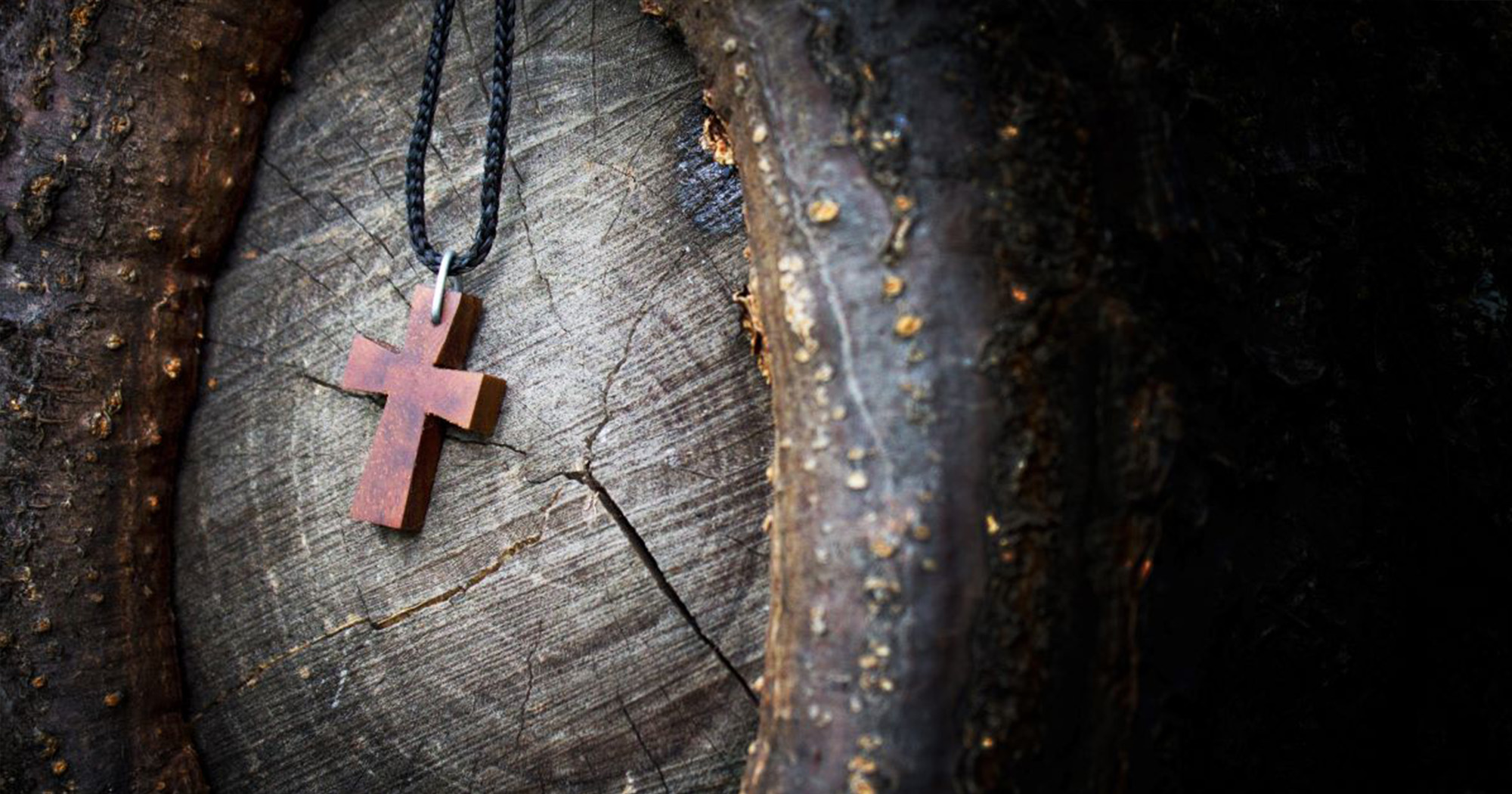


In my home, there is an altar.
Not a metaphorical one. One of carved wood, and cloth, and brass … and meaning. It is a place of sacrifice, where prayers are offered and heard. It is not in the family chapel I’d love to have if I were a great deal wealthier. It is not richly ornamented. It’s a deceptively nice-looking budget Walmart console table on which I’ve placed a clean cloth, a crucifix, two small candles, and a Bible.
Even its location seems imperfect. My family lives in a two-bedroom apartment, and the only place to put the altar, it turned out, was in our living room, just inside the front door. Like the One whom it is there to help us worship, it is awkwardly, inconveniently, a physical centerpiece of our day-to-day life.
There’s simply no other place to put it, so it is within ten feet of our TV, five feet of our bookshelves, and in view of nearly every conversation we have. It has to keep company with the bookish quotes and paintings on the wall, the noisy games of chase with the children, and the ubiquitous stray Cheerio.
All in all, something less-stunning than the altar you’d see visiting even the simplest ancient church, let alone the great cathedrals I love so much.
In fact, that was part of the reason we didn’t even assemble this little scene until our oldest child was three. My wife and I had wanted to do it when he was born. But we figured it just didn’t quite fit anywhere.
I’m beginning to realize how wrong we were.

It’s so easy to make Christianity special, and ordinary, in all the wrong ways, because on the one hand we have the sacred, and on the other, “life.” When we encounter the sacred, we seem to have nowhere to put it.
Humans, especially humans in our time, have a tricky relationship with sacred space. I’ve seen many people visit cathedrals, great cities, beautiful places, memorable conferences, and come back with a wistfulness to return—but not a motivation to emulate.
We love encountering something special, something sacred. The exceptionality inspires us in a passive sort of way. But there’s something daunting, even foreign, about it that discourages imitation.
That’s not to diminish the significance of those sacred places and experiences. Quite the opposite—in a desacralized age, we need these truly epic things more than ever. We need things that open our minds to the transcendent and remind us that there is more than the common, the mundane, and the ordinary.
Writing about favorite places in Lewis and Tolkien’s neighborhood, my friend Lanier Ivester wrote gratefully a few months ago about “places that keep our old joys in trust,” waiting for our return.
But those places are only half of a story we are supposed to continue. Why can’t we seem to bring them back with us?
There is a simple reason, as Alexander Schmemann explains: as inspiring and uplifting as the otherworldly may be, “it has no meaning for the ‘real’ time in which the real man must live…a nightmarish alternation of ‘rush’ and ‘relaxation.’”
It’s so easy to make Christianity special, and ordinary, in all the wrong ways, because on the one hand we have the sacred, and on the other, “life.” When we encounter the sacred, we seem to have nowhere to put it. It’s like an ill-considered souvenir of a vacation that ends up stuffed into a closet. It belongs back there and seems so out of place here; as if sacredness of there were a license for all else to be unsanctified by comparison. We keep the special at such a distance that it can’t pierce the ordinary.
Or worse, we unwittingly downplay the holiest things we do encounter, striving to understand them in ordinary terms: the wife says glowingly that her husband is her best friend; people tell visitors that their church “is like a big family;” and they think they’ve done them favors—as if they realized that that vacation souvenir would make an excellent shoebox.
It’s all so hard, this business of the already and the not yet.
But the sacred is not a prayer break. It is designed to show us the ideal—what is truly real—and empower us to bring it everywhere. A husband isn’t merely a best friend but the icon of Christ in a marriage. And the church is not a big family—a family is a little church. And the sacred is not a souvenir brought back to real life – it is real life and must either conquer what we think is real life, or remain outside it.
And so, imperfect and unapologetic, something large and churchy sits in my living room.
Because I think it’s this invasion of the sacred into the rhythms of the ordinary that can begin to drive us homeward. We desperately need Sacred Spaces—far more of them than most of us have regular access to—and we desperately need more ordinary space to be seen with the eyes of the sacred. We need more places that hold our old joys in trust, but we need more of them to be places that carry memories of our real lives and not our summer vacations.

But the sacred is not a prayer break. It is designed to show us the ideal—what is truly real—and empower us to bring it everywhere.
I’ve grown to deeply appreciate the magic of beginning my day kneeling before the King with my family. Edith, just now two, is often not in the mood. Edmund gets carried away by her antics sometimes. I’m often in a hurry because I’m nearly late for work.
But in a way that private devotions never did for me, and that a closed-eyes prayer never did for the rambunctious Edith, the invasive, theatrical presence of the altar stills us. The reminder of God is ever-present—like the candles’ flickering flames, stillness and motion—and has the ability, day after day, to order and form that day-to-day life.
Unlike so many worship experiences, our altar (and the prayers made at its feet) doesn’t “abstract from our present, or our surroundings, or our neighbor.” It helps to teach us to pay attention. It is not invisible; it is sacramental—carved wood, and cloth, and brass, and meaning.
It is a home altar, and little by little, is making our home an altar. A place where prayers are offered and heard. Where sacrifices are made. And where the great Sacrifice, and its present reality, is ever before us.
This was originally published at The Cultivating Project.
Brian Brown is Director of Marketing & Development at the Colson Center for Christian Worldview and serves as the executive director of the Anselm Society (anselmsociety.org).














